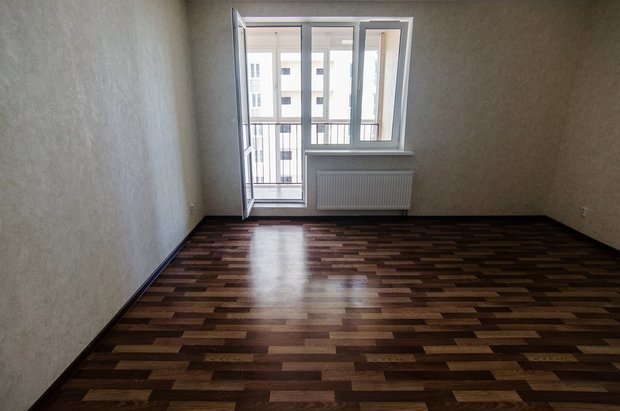What housing market to look like in 2022 after Central Bank's key rate increase
To what extent the regulator's decision will affect mortgage lending, some banks are already changing the terms
According to experts, the Russian mortgage market by the end of 2021 will reach record levels of 5,6 trillion rubles, adding more than one trillion rubles per year. This growth was made possible thanks to preferential housing lending programmes and low mortgage rates. There will be no such growth in 2022, experts warn. The terms of the programme “Mortgage at 6,5%" have been tightened, the Central Bank systematically raised the key rate — from 4,25% in March to 8,5% in December. As a result, banks began to raise rates on their own mortgage programmes. Artur Safiulin, a columnist for Realnoe Vremya, economist with many years of banking experience, suggests considering the situation in the mortgage market and figuring out whether there is a chance that we will see double-digit mortgage rates again.
Central Bank's fight against inflation
Since the beginning of this year, the rate has already increased in stages by 4,25%, rising from a historic low of 4,25% in March to 8,5% in December, as part of serious tightening of monetary policy. From a purely economic point of view — this is the right vector — the Central Bank should not think about building up banks' loan portfolios, but about macroeconomic stability. After all, real inflation, despite official statistics, is already in double digits.
Inflation accelerated to 8,4% in annual terms, and in early December, the economic authorities stated that the previous forecasts did not come true and the price increase turned out to be worse. The key factor in determining the size of the rate increase was the inflation data, which was published during the so-called week of silence (seven days before the meeting). If inflation had passed its peak, the increase in the key rate at the Central Bank meeting would have been at the level of 0,75%. If not, then, in addition to an increase of 1%, another increase is expected in February 2022.
I would like to note that the inflation expectations of the population, according to a survey by the Central Bank, have increased from 13,6% to 14,8% over the past 2 months. In July, the Central Bank noted an improvement in the situation with food inflation and a weakening of inflationary pressure in general in June-July. The tone of the Central Bank's comments then spoke of a limited potential for rate growth. The autumn-winter decisions and the further planned tightening of the monetary policy indicate that the Central Bank hastened with favourable forecasts.
In general, taking into account the current dynamics of price increases, we should not expect a significant slowdown in inflation until the end of the year — price growth is far away from the targets of the Central Bank. The advantage of the increase will be the growing attractiveness of Russian assets, which will lead to an influx of foreign capital into our financial markets, which will support the ruble, strengthening to 69 rubles per dollar and 81 rubles per euro is not excluded.
Housing market and mortgage
The mortgage lending market is very significantly affected by the increase in the key rate. According to forecasts, an increase in the rate to 9% await us in February, in further attempts to bring down the growth of inflation and inflation expectations. Together with the tightening of terms for preferential housing loans with state participation, the increase in the key rate may significantly raise mortgage rates — average rates in December are already 9,58%, in 2022 they may rise above 11%.
More than half of housing purchases in the country occur using credit resources and their rise in price can drop the demand for housing. Moreover, a serious increase in housing prices continues and, to put it mildly, does not contribute to an increase in sales. And this is despite a record number of housing commissioned in the last few years.
In 2020, 82 million square metres of housing were built — this is the third indicator in history after 2015 and 2015. In 2021, this indicator was reached in the autumn. According to forecasts, about 95 million square metres of housing will be built this year.

In the third quarter, on an annualised basis, housing prices added 14,6%. The price increase continues due to high demand, the rise in the cost of building materials and labour against the background of a shortage of personnel. According to forecasts, some price stabilisation was expected in early 2022, but consumer demand is still high. One of the reasons may be the desire of people to buy real estate during a period of economic uncertainty, to get away from inflation. Inflation, in turn, leads to an increase in the costs of developers for work, materials, services, electricity, equipment. One shouldn't expect a reduction in prices next year.
“Number of loans issued will fall by 20-25%"
Oleg Islamov, the director for retail business development and sales at AK Bars Bank PJSC, briefly outlined the possible development of events in the mortgage market to Realnoe Vremya:
How will mortgage rates change after the key rate increase?
As a rule, each increase in the key rate leads to an increase in mortgage rates. We believe that the previous increase in December will not be an exception.
There is an opinion that in the new year the rates will reach 11%. What is your forecast for the market in general?

Many experts agree that the Bank of Russia will continue to raise the key rate at least in 2022. What does this change in your bank's annual and medium-term mortgage lending strategy?
In the era of tight monetary policy pursued by the Central Bank of Russia, there is a tendency to increase the key rate next year. Mortgage loans are expected to rise in price in 2022, which will lead to a decrease in the level of purchasing power and a cooling of demand for real estate. Commercial banks, in turn, will continue to announce attractive programmes with low rates and other promotions. The new realities presuppose the conclusion of new agreements with developers and partners regarding the introduction of mortgage subsidy programmes, an increase in payment terms, deferrals and other tools for attracting customers, — Islamov summed up.
In conclusion, I would like to note that, according to the forecasts of relevant experts, in 2022 the mortgage market will decrease by 10% — to 5 trillion rubles. This will still be a record figure in recent years (not counting the current year).
A slowdown in growth will occur against the background of an increase in the cost of mortgage loans, a drop in effective demand and low growth rates of household incomes. The number of loans issued will fall by 20-25%, but this will be offset by that the average size of a mortgage loan will grow by 10-12% — up to 3,6 million rubles. The average term of mortgage loans will also continue to grow — from 17 years in 2019 to 23 years by the end of 2022.
Reference
The author's opinion may not coincide with the position of the editorial board of Realnoe Vremya.